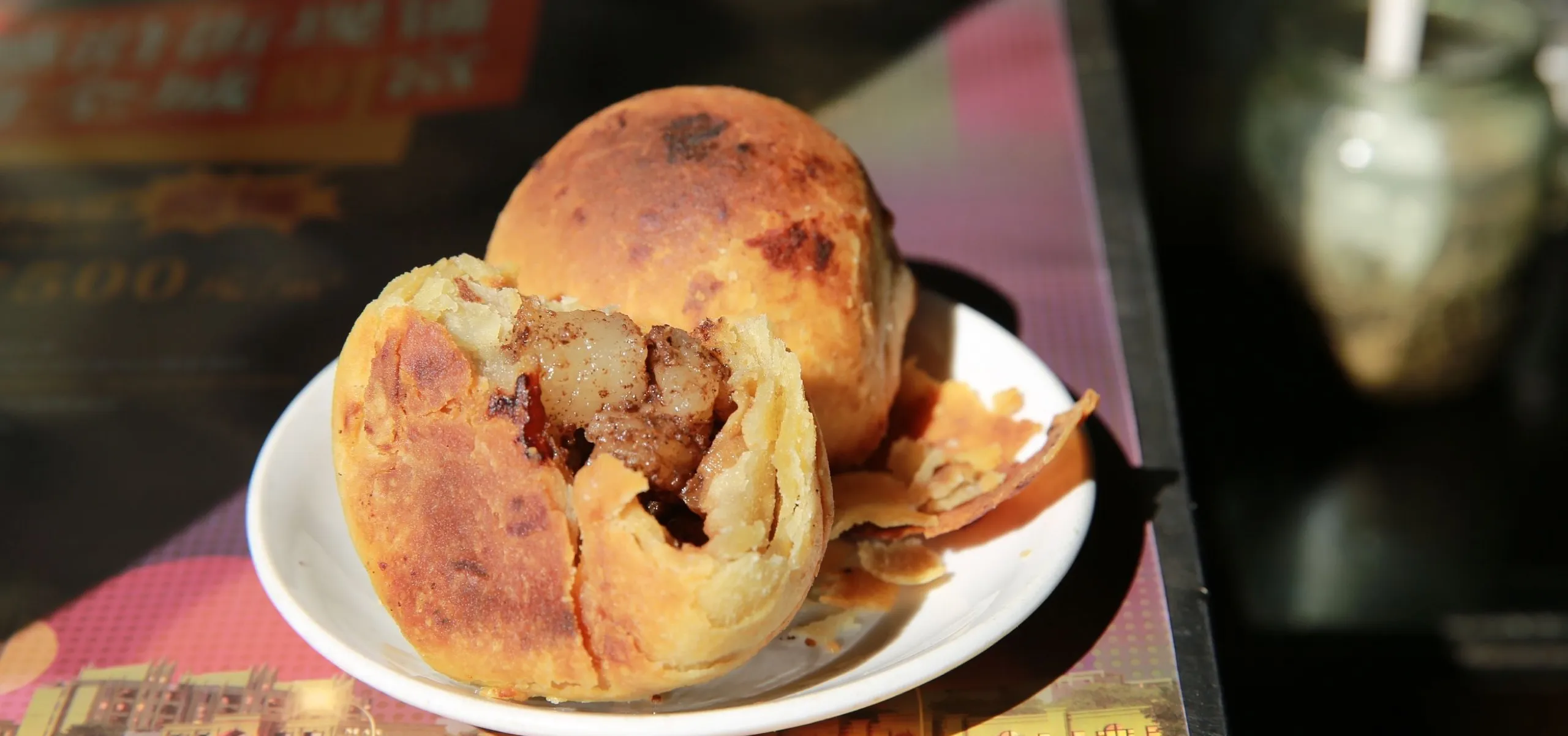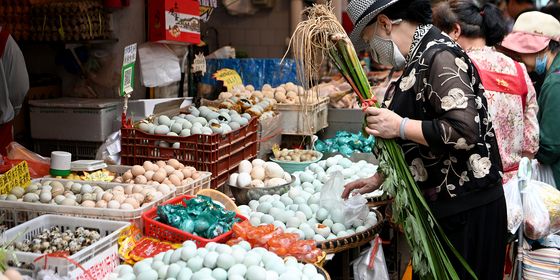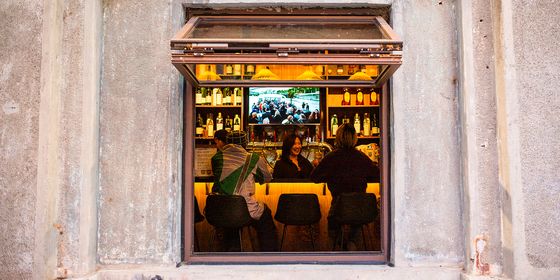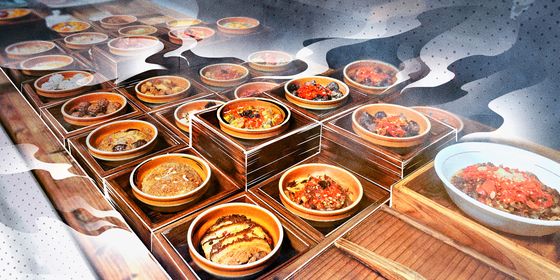These bite-sized beef pastries come with a heroic origin story
The cuisine of northeastern China, or Dongbei, is famous for its large portions of stewed meats in massive woks, steaming away in the invariably frigid winter evenings. But one exception to this reputation for large portion sizes is 火勺 (huǒsháo), literally “fire spoon” in English, a common bite-sized street snack in the Northeast.
Originating in Tieling, Liaoning province, where it remains wildly popular, huoshao is a small, thin, beef-filled pancake that’s simple to make and cheap, yet warm and filling. It should not be confused with the similarly named 火烧 (huǒ shao), another northern snack which is thicker, made of fermented flour, and can come without filling; nor 馅饼 (xiànbǐng), filled pastries which are larger and common across most of northern China.
Tieling’s huoshao has a crispy outer skin, rather than a soft pastry wrapping like other pancake foods. It is also baked on a large flat iron plate in an oven, rather than being deep fried directly in oil, and is always served fresh. Lastly, an authentic huoshao can only be filled with beef and leek; no other meat or vegetable is acceptable. This means that at a local huoshao restaurant, there’s no choosing what kind of huoshao you want—just how many.
At just 1 yuan a pop in most eateries, huoshao are a delicious cheap eat, with ten normally more than enough to satiate one person. A bowl of mutton sweetbread soup seasoned with pepper often pairs the oven-cooked huoshao, offsetting its crispy texture. A set of half-a-dozen huoshao and a bowl of soup can come to around 20 yuan.
Despite its simplicity and affordability, huoshao has a somewhat legendary origin story. Folk tales attribute it to Wanyan Aguda, the founder and first emperor of the Jurchen-led Jin dynasty (1115 – 1234). In 1115, the Liao dynasty (907 – 1125) army of 700,000 men marched against Aguda’s Jin force of just 20,000 troops. Aguda became so anxious of the battle that he lost his appetite for several days.
With Aguda’s advisers all worried about his health and the state of the war, his cook turned out his new culinary invention. Unlike the regular Jurchen food Aguda was used to, which came in large portions with little care for presentation, these round fried pies appeared carefully cooked and delicately presented.
Their novel appearance attracted Aguda’s interest, and as soon as he tasted the pies, his appetite returned. Together with bowls of mutton sweetbread soup served by his favorite concubine, Aguda wolfed down all the pies and felt ready to face battle once more. Aguda apparently came up with the name, huoshao, since each pie was as big as a soup spoon, and ordered his cooks to distribute them to all his soldiers. Eventually, the Jurchen’s 20,000 cavalrymen routed the Liao army at the Battle of Hubudagang in August 1115.
Though the battle was a real event, huoshao’s role in the Jurchen victory is almost certainly myth—but who could reject a story that adds legendary color to their favorite food?
As time passed by, huoshao remained popular around Tieling, and its recipe was handed down until today. Tieling is best-known as the “land of comedy,” in part because it is the hometown of renowned comedian Zhao Benshan, who frequently cracks jokes about the city. But huoshao is no laughing matter to locals, who are just as proud of their city’s signature food.
Ingredients:
700g flour
650g beef
4 leeks
50g ginger
2 tsp salt
1 tsp pepper
2 tsp soy sauce
100g beef tallow
Steps:
- Mix 500g of flour with warm water, then knead into a dough. Cover with a plastic film and put it aside for two hours.
- Heat the beef tallow until it melts then mix it with the remaining flour. This will be the pastry.
- Mince the beef and chop the leeks; mix together. Add the ginger, salt, pepper, and soy sauce to make the filling.
- Roll the dough into a flat sheet. Put the dry pastry on top, spread evenly across the dough.
- Roll up the dough with the dry pastry mix and stretch into a long strip, fold in half, then repeat the process several times to combine the dough and pastry
- Cut the mixture into small pieces and flatten into circles.
- Stuff the filling into each dough circle, roll into a ball, then flattened again into circles.
- Preheat the oven to 220 degrees Celsius. Brush oil on both sides of each filled dough circle, and bake for around 15 minutes.
- Serve with spicy sauce and soup.













